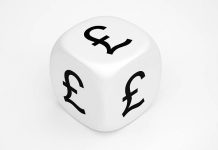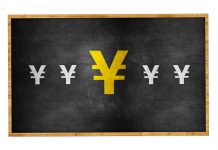In focus today
In the US, we will look out for any announcements following the implementation of Trump’s reciprocal tariffs. Later in the day, Fed’s Barkin is scheduled to speak, and the release of the FOMC minutes could give clues on discussions on the reaction function and the state of USD liquidity. In terms of recent tightening of financial conditions, we expect the Fed to adopt a wait-and-see approach, focusing on stabilising markets through verbal guidance before easing rates. Current market pricing suggests nearly five 25bp rate cuts this year, with a 50% chance of the first cut in the May meeting.
In the euro area, today’s focus will be on the EU voting of the Commission’s proposal to impose retaliatory tariffs of up to 25% on EUR21bn worth of US imports. This could trigger an even more aggressive response from Washington. Furthermore, we have a string of ECB speakers on the wire. The governing council seems to be in agreeance that the US trade policy aggression could provide a significant blow to global growth, so the question will be to what extend the hawkish camp still sees upside risks to inflation associated with tariffs.
Overnight, China is set to release CPI data.
Economic and market news
What happened overnight
In the US, President Trump’s reciprocal tariffs took full effect this morning at 6.01 CET, targeting countries with the largest US trade deficits, while others remain subject to a 10% baseline tariff. Notably, a 104% tariff on Chinese goods has been implemented, following recent days’ trade war escalation between the US and China. Speculations about a Chinese retaliation including CNY weakening and outright selling of US assets are now circulating in the media.
At a White House event Tuesday evening, President Trump mentioned that numerous countries are eager to make deals, expressing optimism that China would also pursue an agreement. Moreover, Trump signalled he may not be done with tariffs, and major tariffs on pharmaceutical import should soon be expected.
In New Zealand, the Reserve Bank of New Zealand lowered its policy rate to 3.50% (prior: 3.75%), as widely expected.
In commodities space, oil prices dropped to their lowest in more than four years in early trade on Wednesday, with Brent spot trading in the USD 60-61/barrel range this morning.
Long-end US Treasury yields are up by 20bp since yesterday despite risky assets seeing additional weakening. The sell-off was isolated to the bond market, which suggests that a correction in term premia was behind the move. Rumours about Chinese selling of US assets, hedge funds unwinding their US Treasury exposure and weak demand at yesterday’s 3Y Treasury auction were all potential causes. Markets will await the outcome of tonight’s 10Y UST auction, which will give further hints on whether the correction in yields since yesterday has added sufficient demand for duration.
What happened yesterday
In the euro area, the ECB speakers seemed aligned on the risk of a major demand shock following the new US tariffs. Germany’s Nagel (hawk) stated that the new trade policy course in Washington has ‘significantly worsened the global out, while Simcus (neutral/hawk) said that a 25bp cut next week ‘will be needed’, although he abstained from providing guidance on whether he expects another cut in June.
In Sweden, home prices were unchanged on the month in March, according to HOX Valueguard, following declines in January and February. The drop in transactions underlines household pessimism now showing up in hard data. In the coming months, the housing market faces further downside risk. Stock price declines affect household wealth as well as the overall sentiment, which could weigh on home price growth. In addition, a downtick in transactions indicate increasing supply. However, speculation about rate cuts might provide some relief.
In Denmark, the industrial production rebounded in February, rising by 5.1% after a significant drop in January. Despite this improvement, the output over the past three months remains lower than the previous period, partly due to fluctuations in pharmaceutical production.
In geopolitics, US Treasury Secretary Bessent criticised China’s escalation of trade war tensions calling it “a big mistake”, as the White House clarified the enforcement of additional 50% tariffs. Furthermore, during a Senate Finance committee hearing, USTR Greer confirmed that President Trump will not grant exemptions from new global tariffs, while efforts are being made to accelerate trade negotiations. Greer also clarified that the proposed fees for Chinese-built ships at U.S. ports will not all necessarily be cumulative.
In Ukraine, President Zelenskiy announced the capture of two Chinese nationals fighting for Russia in eastern Ukraine, raising concerns about China’s involvement in the conflict. Ukraine is seeking responses from both China and the US, while the US State Department expressed disturbance over the claims.
Equities: Another volatile trading day, taking equities sharply lower and VIX back above 50. Equity markets are 80% determined by Trump, 15% comes from the unexpected rally in yields (more on that below) and 5% is the oversold positioning. However, valuation is in isolation not too low for an outright buy argument, macro data is completely outdated and Q1 earnings are too. This is why equity markets cannot simply “cope” with new tariffs threats and why we are not in the “it is all priced in” camp.
What looked like a rebound day for equities was therefore capped by new tariff threats from Trump (this time on pharma) and zero signs of China backing down. S&P 500 closed down -1.6% taking it -19% off its February record. This was not a capitulation session, far from it, with investors very picky on what to buy and sell. Investors – and we – were caught off guard by yields, sending real estate and consumer discretionary lower. Materials also a standout, weaker on fears on how tariffs will affect the Chinese economy. Meanwhile, an odd mix of banks, industrials and utilities outperformed, in a sign that investors are not yet wanting to add too much risk in cyclicality when tariff uncertainty is this high.
Asian and European futures are playing catch this morning, with Nikkei 225 down as much as -4% after the rally yesterday. Despite that the >100% tariffs are now live, investors are calmer in China (Hang Seng -1.6% and Shenzhen even 0.6% higher).
FI&FX: Risky assets gained from the start of yesterday’s session, but the tailwinds faded gradually as the Trump administration stood firm on its intention to implement the reciprocal tariffs (and the Chinese 50% add-on) today. S&P 500 closed 1.5% lower after being up by 4% from the start of the session. This emphasises the current extreme intraday volatility. DXY is 1% lower since yesterday with EUR/USD now back above the 1.10 mark. EUR/CHF broke below the 0.93 mark as risk sentiment started to deteriorate again. EUR/NOK has moved above 12 as energy prices plunged further. Brent is trading at USD60.5/bbl this morning, the lowest level since early 2021. Long-end US Treasury yields have risen 20bp since yesterday despite the sell-off in risky assets.













